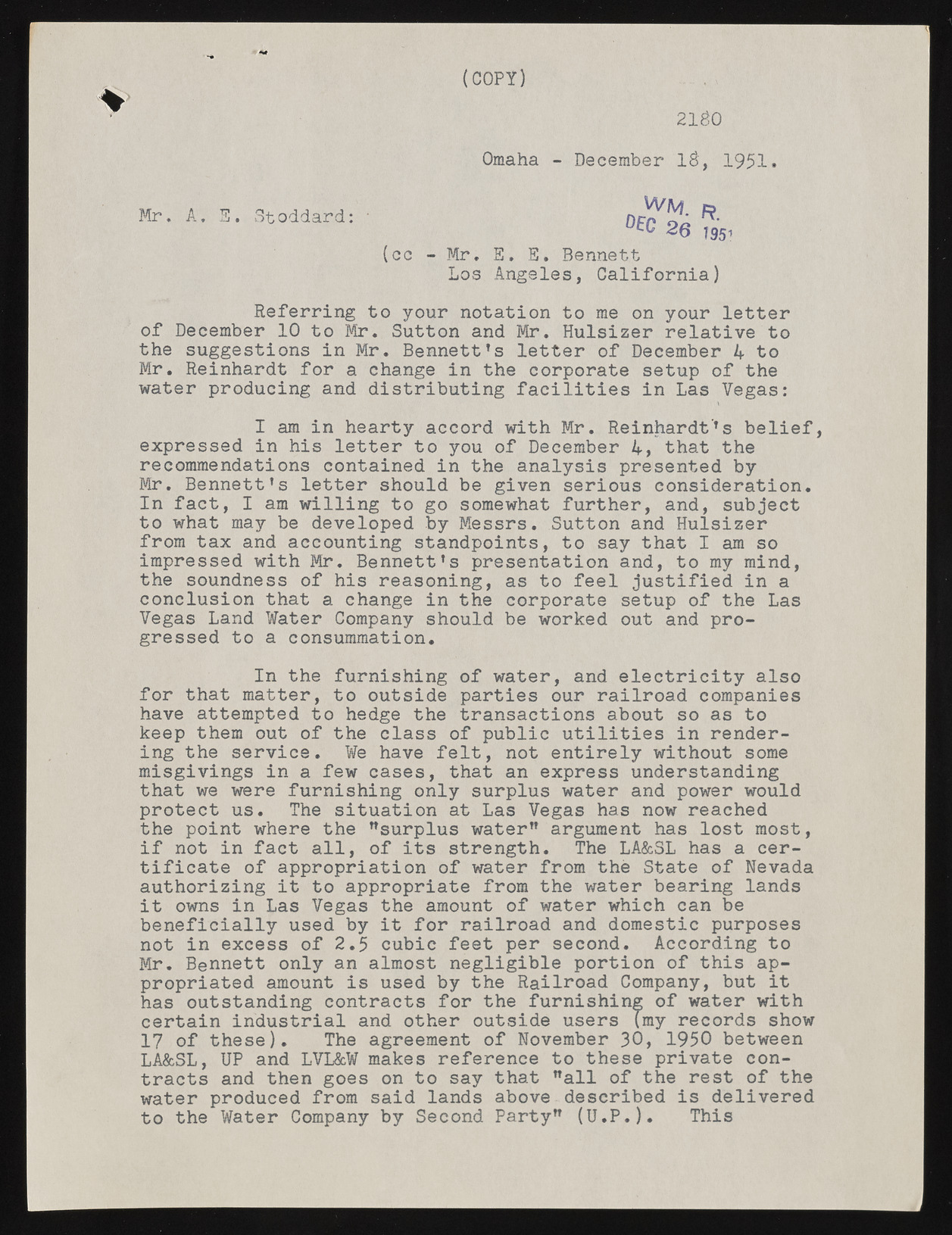Copyright & Fair-use Agreement
UNLV Special Collections provides copies of materials to facilitate private study, scholarship, or research. Material not in the public domain may be used according to fair use of copyrighted materials as defined by copyright law. Please cite us.
Please note that UNLV may not own the copyright to these materials and cannot provide permission to publish or distribute materials when UNLV is not the copyright holder. The user is solely responsible for determining the copyright status of materials and obtaining permission to use material from the copyright holder and for determining whether any permissions relating to any other rights are necessary for the intended use, and for obtaining all required permissions beyond that allowed by fair use.
Read more about our reproduction and use policy.
I agree.Information
Digital ID
Permalink
Details
Member of
More Info
Rights
Digital Provenance
Publisher
Transcription
(COPT) 2130 Mr. A. S. Stoddard: • ^6 1951 (cc - Mr. E. E. Bennett Los Angeles, California) Referring to your notation to me on your letter of December 10 to Mr. Sutton and Mr. Hulsizer relative to the suggestions in Mr. Bennett’s letter of December 4 to Mr. Reinhardt for a change in the corporate setup of the water producing and distributing facilities in Las Vegas: I am in hearty accord with Mr. Reinhardt’s belief, expressed in his letter to you of December 4, that the recommendations contained in the analysis presented by Mr. Bennett’s letter should be given serious consideration. In fact, I am willing to go somewhat further, and, subject to what may be developed by Messrs. Sutton and Hulsizer from tax and accounting standpoints, to say that I am so impressed with Mr. Bennett’s presentation and, to my mind, the soundness of his reasoning, as to feel justified in a conclusion that a change in the corporate setup of the Las Vegas Land Water Company should be worked out and progressed to a consummation. In the furnishing of water, and electricity also for that matter, to outside parties our railroad companies have attempted to hedge the transactions about so as to keep them out of the class of public utilities in rendering the service. We have felt, not entirely without some misgivings in a few cases, that an express understanding that we were furnishing only surplus water and power would protect us. The situation at Las Vegas has now reached the point where the ”surplus water” argument has lost most, if not in fact all, of its strength. The LA&SL has a certificate of appropriation of water from the State of Nevada authorizing it to appropriate from the water bearing lands it owns in Las Vegas the amount of water which can be beneficially used by it for railroad and domestic purposes not in excess of 2.5 cubic feet per second. According to Mr. Bennett only an almost negligible portion of this appropriated amount is used by the Railroad Company, but it has outstanding contracts for the furnishing of water with certain industrial and other outside users (my records show 17 of these). The agreement of November 30, 1950 between LA&SL, UP and LVL&W makes reference to these private contracts and then goes on to say that ”all of the rest of the water produced from said lands above described is delivered to the Water Company by Second Party” (U.P.). This Omaha - December 1$, 1951.

